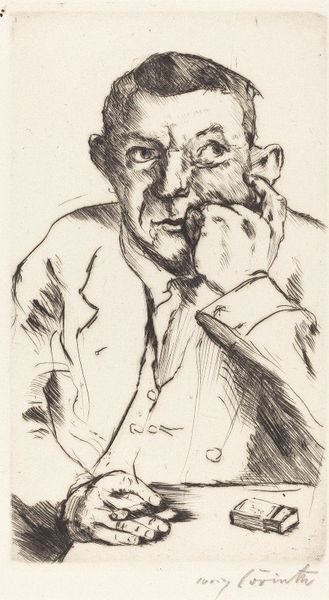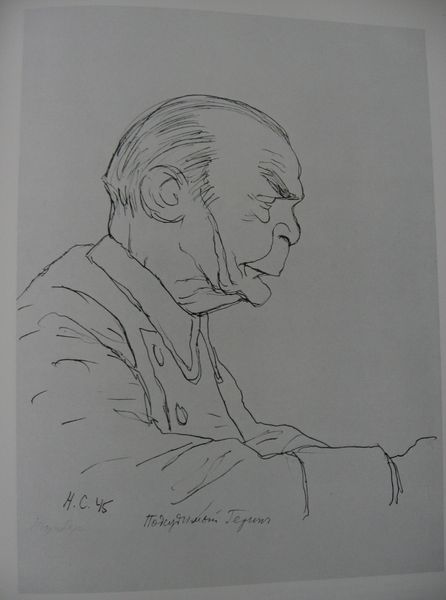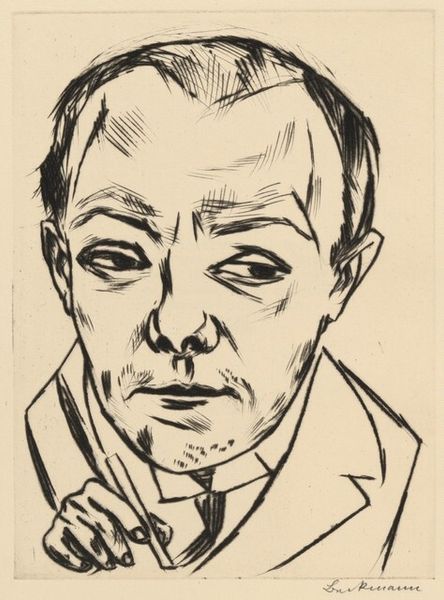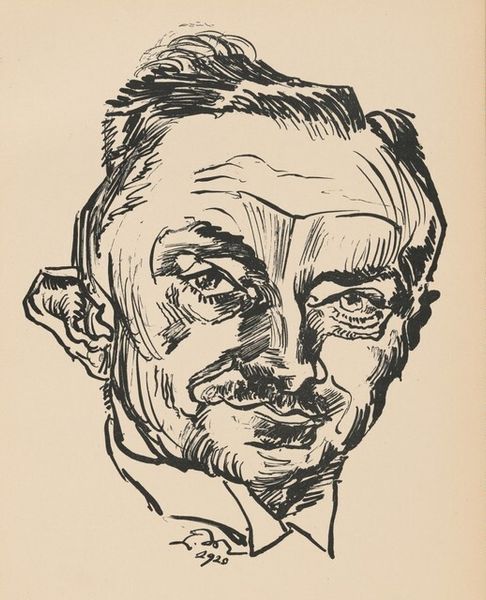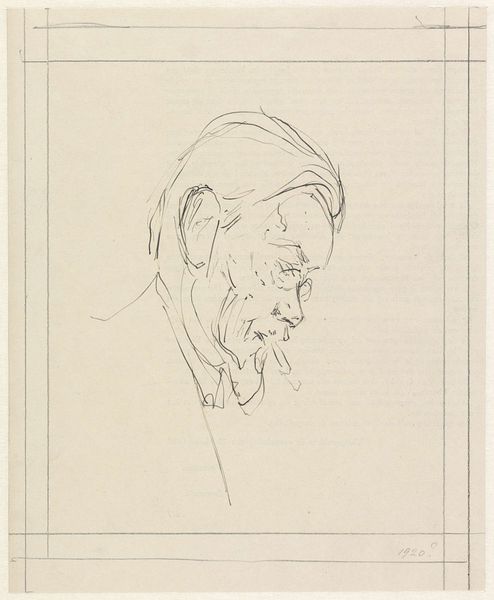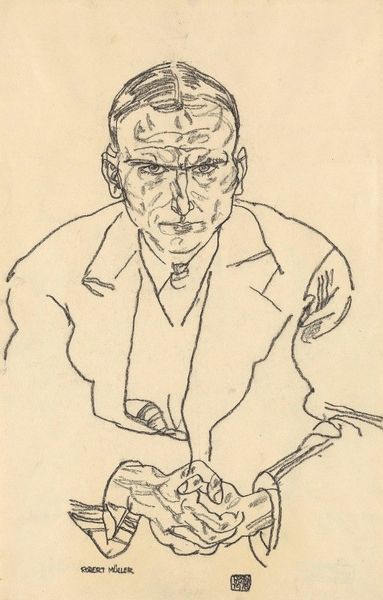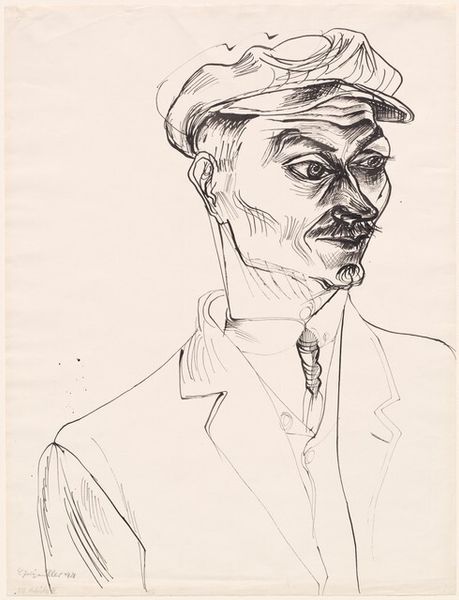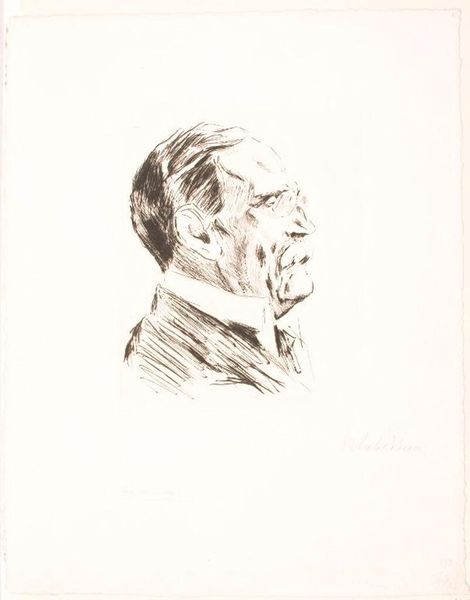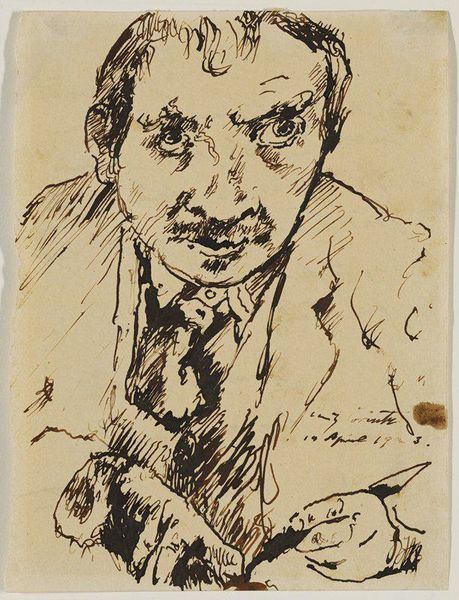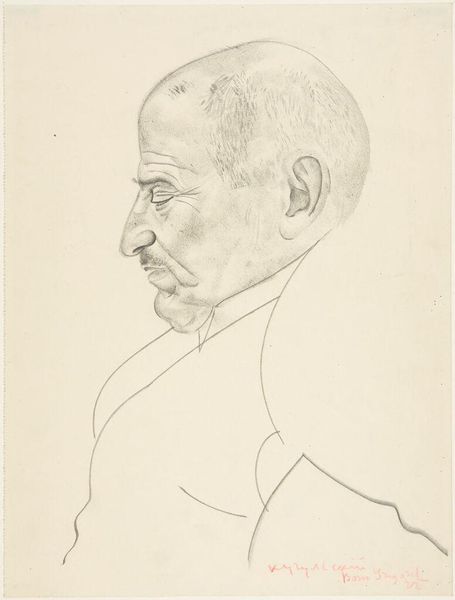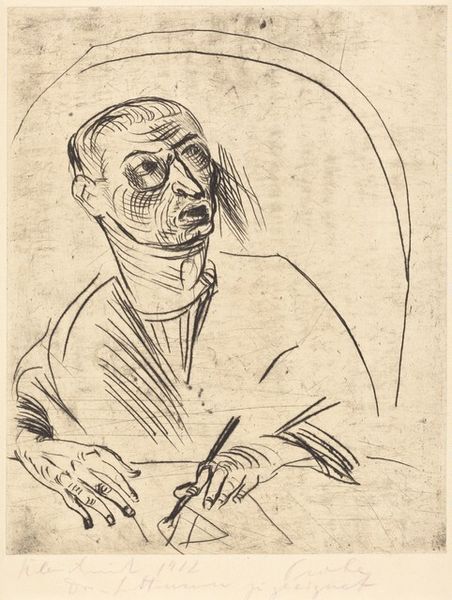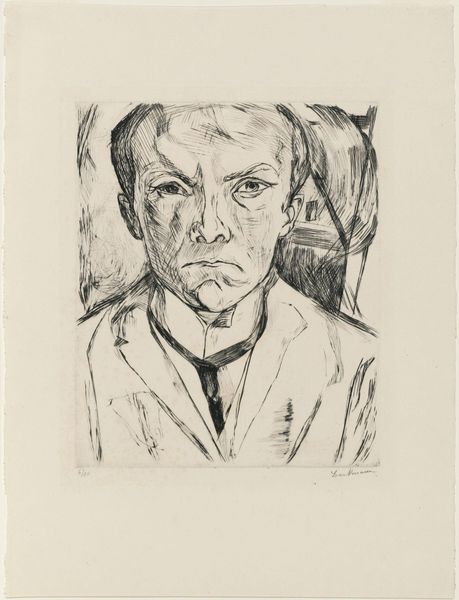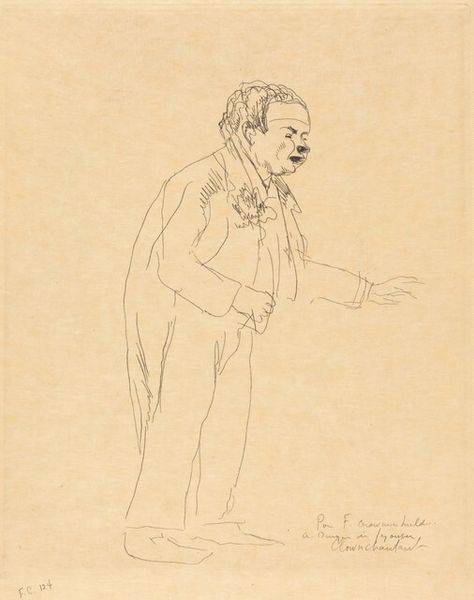
drawing, print, charcoal
#
portrait
#
drawing
# print
#
caricature
#
german-expressionism
#
expressionism
#
portrait drawing
#
charcoal
Copyright: National Gallery of Art: CC0 1.0
Curator: Standing before us, we have Max Beckmann’s compelling 1921 charcoal drawing, "Dr. Weidner." Editor: My first impression is one of intense scrutiny. The subject’s eyes are deeply set, almost piercing. It’s an unsettling but undeniably powerful image. Curator: Indeed. Beckmann produced this drawing during a pivotal period of societal upheaval in Germany following the First World War, deeply influenced by the artistic currents of German Expressionism. Consider how artists were grappling with feelings of disillusionment. Editor: The visible anguish is almost palpable; I can’t help but reflect on the weight of the sociopolitical climate of the Weimar Republic on individuals. The angular lines and distorted features are all telling. There's a sense of unease but also of someone grappling with difficult circumstances. I'm wondering about Dr. Weidner, himself. What did he represent during this era? Curator: We know that Beckmann made a number of portraits during the 1920s capturing members of German society during the interwar period. What strikes me about this particular portrait is its sharp contrast in tones, how his Expressionistic style portrays the psychological landscape of its subject with raw honesty. It prompts questions about class, mental health, and perhaps the failures of social structure to care for its population in this climate of war. Editor: The heavy lines forming the hands add another layer of complexity; he seems contemplative or almost protective in his body language. Are the hands covering his chest to convey introspection or protect himself from attack? There's vulnerability conveyed in this image of Dr. Weidner, his face is also so heavily lined, indicative of the anxiety or psychological toll exacted by war. Curator: Absolutely. The context of post-war Germany and the flourishing Expressionist movement clearly shaped Beckmann's approach, yet Dr. Weidner's face seems to encapsulate the profound sense of unease experienced during those years. Art provided him a tool to document how socio-political upheaval impacted his subjects's minds. Editor: I leave feeling confronted and reminded of the emotional impact of art and our shared historical experiences and the complexities of a turbulent past. I believe Beckmann’s legacy is secured in forcing us to empathize with Dr. Weidner. Curator: It’s in portraits like these that we gain unique insight into Germany during this time. The Expressionists allowed art audiences to contend with a different side of social unrest as they captured the zeitgeist on paper, an ability to connect emotionally that prevails a century later.
Comments
No comments
Be the first to comment and join the conversation on the ultimate creative platform.
